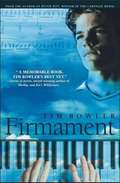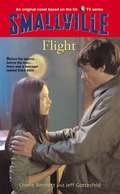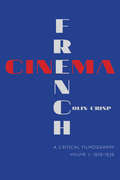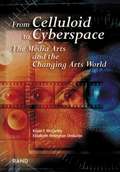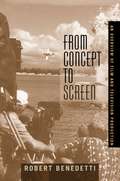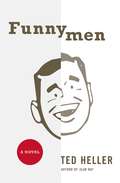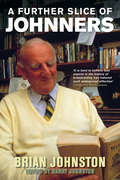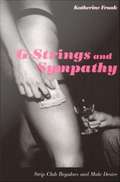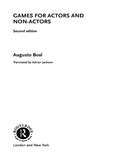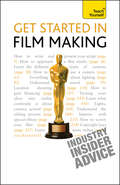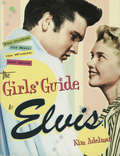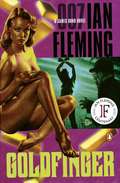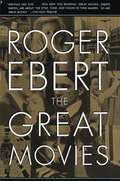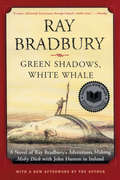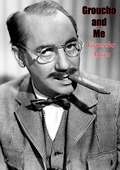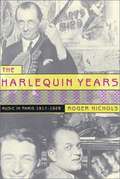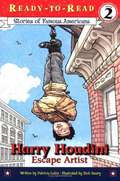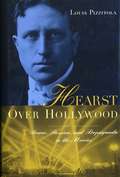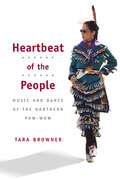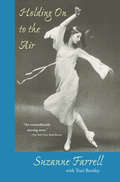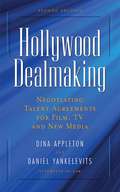- Table View
- List View
Firmament
by Tim BowlerTo prove he's part of the gang, Luke must climb into Mrs. Little's house and steal something. But inside the house, Luke encounters something so unexpected that it changes everything -- something that unlocks secrets and helps Luke find out exactly who he is.
Flight (Smallville Young Adult #3)
by Cherie Bennett Jeff GottesfeldThis third adventure based on the WB's hit TV series is by two noted authors who have written screenplays for the show, and follows a young, legendary Clark Kent, Lana Lang, and Lex Luthor, complete with all the thrills and strange happenings that fans of "Smallville" expect.
Franklin's Music Lessons
by Paulette BourgeoisFranklin wants to play "Row, Row, Row Your Boat" on the piano, so he begins taking lessons. He learns the scales, but he would rather play baseball than practice. Will Franklin ever master the song? This Level 2 first reader contains longer stories, varied sentences, increased vocabulary, more difficult visual clues and some repetition.
French Cinema—A Critical Filmography: Volume 1, 1929–1939
by Colin CrispThis invaluable resource by one of the world’s leading experts in French cinema presents a coherent overview of French cinema in the 20th century and its place and function in French society. Each filmography includes 101 films listed chronologically (Volume 1: 1929–1939 and Volume 2: 1940–1958) and provides accessible points of entry into the remarkable world of 20th-century French cinema. All entries contain a list of cast members and characters, production details, an overview of the film's cultural and historical significance, and a critical summary of the film's plot and narrative structure. Each volume includes an appendix listing rewards earned and an extensive reference list for further reading and research. A third volume, covering the period 1958–1974, is forthcoming.
Froggy Plays in the Band
by Jonathan LondonHere comes Froggy's marching band, led by the one and only Frogilina. Froggy and his pals are sure they can win the big prize in the Apple Blossom Parade, even though they haven't been playing together very long. They just need to remember the rules: Don't look left. Don't look right. And DONT STOP FOR ANYTHING! But when Froggy's around, things never go quite as planned... Limited picture descriptions added.
From Celluloid to Cyberspace
by Kevin F. Mccarthy Elizabeth Heneghan OndaatjeCurrent knowledge of the operation of the arts world and its underlying dynamics is limited, especially with regard to the media arts--art that is produced using or combining film, video, and computers. The authors examine the organizational features of the media arts, placing them in the context of the broader arts environment and identifying the major challenges they face. They take a structural point of view, discussing audiences, media artists as a group, arts organizations, and funding for the media arts.
From Concept to Screen: An Overview of Film and Television Production
by Robert L. BenedettiWritten by an Emmy-award-winning producer and director, this book focuses on the underlying principles of film and television production, emphasizing the creative rather than the technical aspects. The book describes how a film is created - from conception to screen - and provides a comprehensive overview of the entire production process. Not intended as a "how-to" book, this book presents only a limited amount of detailed technical information. Instead, it emphasizes the underlying principles and processes of primarily four kinds of films: feature, independently financed, made-for-network-television, and made-for-cable movies. For anyone interested in writing, directing, producing or acting for film/TV.
From Tejano to Tango: Latin American Popular Music
by Walter ClarkArticles on how music influences politics and identity in Argentina and Nicaragua, locality in North America and Cuba, and globalization and mass media in Brazil and Peru.
Funnymen
by Ted HellerSIGMUND "ZIGGY" BLISSMAN isn't the best-looking, sanest boy in the world. Far, far from it. But this misfit child of a failed husband-and-wife vaudeville team has one (and only one) thing going for him: He can crack people up merely by batting his eyelashes. And Vittorio "Vic" Fontana, the son of a fisherman, is a fraud. Barely able to carry a tune or even stay awake while attempting to, the indolent baritone (if that's what he is) has one thing going for him: Women love to look at him. On their own, they're failures. But on one summer night in the Catskills, they step onstage and together become the funniest men -- and the hottest act -- in America. Funnymen is the wildly inventive story of Fountain and Bliss, the comedy duo that delighted America in the 1940s and '50s. Conceived as a fictional oral biography and filled with more than seventy memorable characters, Funnymen details the extraordinary careers of two men whose professional success is never matched in their personal lives. The two men fight constantly with their managers, their wives, their children, their mistresses, and those responsible for their success: each other. The stories recounted about Vic and Ziggy -- and the truths Heller reveals about human ambition, egotism, and friendship -- make Funnymen a wild ride of a novel that is also a rare and imaginative masterpiece of storytelling.
A Further Slice Of Johnners
by Brian JohnstonWhen Brian Johnston was a schoolboy, his reports were full of phrases such as 'talks too much in school' and 'apt to be a buffoon'. Later millions of radio listeners would be delighted to discover that some things never changed! Johnners brought his unique wit and personal charm to an enormous range of BBC radio and television programmes for nearly 50 years, from In Town Tonight and Down Your Way to Test Match Special. After Brian died in 1994, Christopher Martin-Jenkins wrote: 'It is hard to believe that anyone in the history of broadcasting has induced such widespread affection'. A Further Slice of Johnners covers Brian's early days, from his childhood in Hertfordshire and his schooldays at Eton and Oxford to his job in the family coffee business in the City and his service with the Grenadier Guards during the Second World War. There is also a selection of the most memorable characters and locations from his fifteen years on the Radio Four programme Down Your Way. Finally there is a collection of Brian's popular 'View From the Boundary' interviews on Test Match Special, including fascinating conversations with Eric Idle, John Major and Peter O'Toole.
G-Strings and Sympathy: Strip Club Regulars and Male Desire
by Katherine FrankBased on her experiences as a stripper in a city she calls Laurelton--a southeastern city renowned for its strip clubs--anthropologist Katherine Frank provides a fascinating insider's account of the personal and cultural fantasies motivating male heterosexual strip club "regulars. " Given that all of the clubs where she worked prohibited physical contact between the exotic dancers and their customers, in G-Strings and Sympathy Frank asks what--if not sex or even touching--the repeat customers were purchasing from the clubs and from the dancers. She finds that the clubs provide an intermediate space--not work, not home--where men can enjoyably experience their bodies and selves through conversation, fantasy, and ritualized voyeurism. At the same time, she shows how the dynamics of male pleasure and privilege in strip clubs are intertwined with ideas about what it means to be a man in contemporary America. Frank's ethnography draws on her work as an exotic dancer in five clubs, as well as on her interviews with over thirty regular customers--middle-class men in their late-twenties to mid-fifties. Reflecting on the customers' dual desires for intimacy and visibility, she explores their paradoxical longings for "authentic" interactions with the dancers, the ways these aspirations are expressed within the highly controlled and regulated strip clubs, and how they relate to beliefs and fantasies about social class and gender. She considers how regular visits to strip clubs are not necessarily antithetical to marriage or long-term heterosexual relationships, but are based on particular beliefs about marriage and monogamy that make these clubs desirable venues. Looking at the relative "classiness" of the clubs where she worked--ranging from the city's most prestigious clubs to some of its dive bars--she reveals how the clubs are differentiated by reputations, dress codes, cover charges, locations, and clientele, and describes how these distinctions become meaningful and erotic for the customers. Interspersed throughout the book are three fictional interludes that provide an intimate look at Frank's experiences as a stripper--from the outfits to the gestures, conversations, management, coworkers, and, of course, the customers. Focusing on the experiences of the male clients, rather than those of the female sex workers, G-Strings and Sympathy provides a nuanced, lively, and tantalizing account of the stigmatized world of strip clubs.
Games for Actors and Non-Actors
by Augusto BoalGames for Actors and Non-Actors is the classic and best selling book by the founder of Theatre of the Oppressed, Augusto Boal. It sets out the principles and practice of Boal's revolutionary Method, showing how theatre can be used to transform and liberate everyone – actors and non-actors alike! This thoroughly updated and substantially revised second edition includes: two new essays by Boal on major recent projects in Brazil Boal's description of his work with the Royal Shakespeare Company a revised introduction and translator's preface a collection of photographs taken during Boal's workshops, commissioned for this edition new reflections on Forum Theatre.
Get Started in Film Making: The Definitive Film Makers Handbook (Teach Yourself General Ser.)
by Tom HoldenMake a Great Short Film is a jargon-free, straightforward guide for all budding film makers. Covering every aspect of making a film, from scriptwriting, casting and cameras to lighting, financing, filming and editing, this is the most comprehensive, user-friendly guide on the market.This new edition has been fully updated to take into account the most recent technological developments in the industry, particularly in terms of advancements in cameras and editing software. Tom Holden will explain the pitfalls, benefits and possibilities offered by this new technology to ensure you don't get bogged down by industry jargon but know what is going to work best for you.NOT GOT MUCH TIME?One, five and ten-minute introductions to key principles to get you started.AUTHOR INSIGHTSLots of instant help with common problems and quick tips for success, based on the author's many years of experience.TEST YOURSELFTests in the book and online to keep track of your progress.EXTEND YOUR KNOWLEDGEExtra online articles at www.teachyourself.com to give you a richer understanding of psychology.FIVE THINGS TO REMEMBERQuick refreshers to help you remember the key facts.TRY THISInnovative exercises illustrate what you've learnt and how to use it.
The Girls' Guide to Elvis: The Clothes, the Hair, the Women, and More!
by Kim AdelmanCan't get enough of the King? A lively romp through all things Presley, this sassy guide covers what you really want to know about the man who continues to leave generations of females "All Shook Up." "It's just like being in junior high again. This book offers the scoop on Elvis's way with women--the wives, the girlfriends, the screaming fans--and leaves plenty of room for ever important hair and wardrobe discussions ... [and] films and concert highlights too."-Time. The first book explicitly fashioned for Elvis Presley's largest fan base, The Girls' Guide to Elvis offers a fabulously fun look at the man who begged us to love him tender. This kitschy, dishy, gossip-filled guidebook is packed with never-before-seen photographs and tasty tidbits about the King of Rock and Roll and his insatiable appetite for females, finery, and good old down-home food. Discover Elvis's bedroom do's and don'ts. Dig into details about his relationships with Priscilla, Ann-Margret, and Nancy Sinatra. Peek at snapshots of Presley on dates with local girls we never even knew about. Delve into his infamous shopping sprees and analyze his predilection for jewel-encrusted jumpsuits. Get the skinny on how Elvis felt about his weight-and even learn to cook low-fat versions of his favorite foods. Plus much, much more. For Elvis fans of all ages--from those who screamed at Elvis the Pelvis in concert to those who know the immortal icon from CDs and DVDs--The Girls' Guide to Elvis is a must-have keepsake.
Goldfinger (James Bond #7)
by Ian FlemingAuric Goldfinger, the most phenomenal criminal Bond has ever faced, is an evil genius who likes his cash in gold bars and his women dressed only in gold paint. After smuggling tons of gold out of Britain into secret vaults in Switzerland, this powerful villain is planning the biggest and most daring heist in history-robbing all the gold in Fort Knox. That is, unless Secret Agent 007 can foil his plan. In one of Ian Fleming's most popular adventures, James Bond tracks this most dangerous foe across two continents and takes on two of the most memorable villains ever created--a human weapon named Oddjob and a luscious female crime boss named Pussy Galore.
The Great Movies
by Roger EbertReprints 100 essays published in the between 1996 and 2001. Revisiting classic films that have been largely forgotten as well as more recent masterpieces, Ebert breaks down each film's plot, its directorial style, and its place in film history. Black and white stills. No index. Annotation c. Book News, Inc. , Portland, OR (booknews. com)
Green Shadows, White Whale: A Novel of Ray Bradbury's Adventures Making Moby Dick with John Huston in Ireland
by Ray BradburyIn 1953, the brilliant but terrifying titan of cinema John Huston summons the young writer Ray Bradbury to Ireland. The apprehensive scribe's quest is to capture on paper the fiercest of all literary beasts -- Moby Dick -- in the form of a workable screenplay so the great director can begin filming. But from the moment he sets foot on Irish soil, the author embarks on an unexpected odyssey. Meet congenial IRA terrorists, tippling men of the cloth impish playwrights, and the boyos at Heeber Finn's pub. In a land where myth is reality, poetry is plentiful, and life's misfortunes are always cause for celebration, Green Shadows, White Whale is the grandest tour of Ireland you'll ever experience -- with the irrepressible Ray Bradbury as your enthusiastic guide.
Groucho and Me: The Autobiography (Classics Of Modern American Humor Ser.)
by Groucho MarxThe “Me” in the title is a comparatively unknown Marx named Julius (1895-1977), who, under the nom de plume of Groucho, enjoyed a sensational career on Broadway and in Hollywood with such comedy classics as Animal Crackers, Monkey Business, Horse Feathers, Duck Soup, A Night at the Opera, and A Day at the Races. His solo career included work as a film actor, television game show emcee, and author of The Groucho Letters, Memoirs of a Mangy Lover, and his classic autobiography, Groucho and Me.With impeccable timing, outrageous humor, irreverent wit, and a superb sense of the ridiculous, Groucho tells the saga of the Marx Brothers: the poverty of their childhood in New York’s Upper East Side; the crooked world of small-time vaudeville (where they learned to carry blackjacks); how a pretzel magnate and the graceless dancer of his dreams led to the Marx Brothers’ first Broadway hit, I’ll Say She Is!, how the stock market crash in 1929 proved a godsend for Groucho (even though he lost nearly a quarter of a million dollars); the adventures of the Marx Brothers in Hollywood, the making of their hilarious films, and Groucho’s triumphant television series, You Bet Your Life!. Here is the life and lunatic times of the great eccentric genius, Groucho, a.k.a. Julius Henry Marx.“The book is never less than readable and its glimpses of American show business at its least glamorous are simple, true and sometimes rather touching.”—Times Literary Supplement“My advice is to ration yourself to a chapter a night—it’s that delectable.”—Chicago Sunday Tribune
The Harlequin Years: Music in Paris 1917-1929
by Roger NicholsA highly readable study of the music scene in Paris after WWI through the 1920s, including classical and popular music, theatre, dance, and the opera.
Harry Houdini: Escape Artist
by Patricia LakinFind out how a little boy named Ehrich Weiss became Harry Houdini -- the greatest magician the world has ever known!
Hearst Over Hollywood: Power, Passion, and Propaganda in the Movies (Film and Culture Series)
by Louis PizzitolaHollywood—crossroads of filmmaking, mythmaking, and politics—was dominated by one man more than any other for most of its history. It was William Randolph Hearst who understood how to use cinema to exploit the public's desire for entertainment and to create film propaganda to further his own desire for power. From the start, Hearst saw his future and the future of Hollywood as one and the same. He pioneered and capitalized on the synergistic relationship between yellow journalism and advertising and motion pictures. He sent movie cameramen to the inauguration of William McKinley and the front lines of the Spanish-American War. He played a prominent role in organizing film propaganda for both sides fighting World War I. By the 1910s, Hearst was producing his own pictures—he ran one of the first animation studios and made many popular and controversial movie serials, including The Perils of Pauline (creating both the scenario and the catchphrase title) and Patria. As a feature film producer, Hearst was responsible for some of the most talked-about movies of the 1920s and 1930s. Behind the scenes in Hollywood, Hearst had few equals—he was a much-feared power broker from the Silent Era to the Blacklisting Era.Hearst Over Hollywood draws on hundreds of previously unpublished letters and memos, FBI Freedom of Information files, and personal interviews to document the scope of Hearst's power in Hollywood. Louis Pizzitola tells the hidden story of Hearst's shaping influence on both film publicity and film censorship—getting the word out and keeping it in check—as well as the growth of the "talkies," and the studio system. He details Hearst's anti-Semitism and anti-Communism, used to retaliate for Citizen Kane and to maintain dominance in the film industry, and exposes his secret film deal with Germany on the eve of World War II. The author also presents new insights into Hearst's relationships with Marion Davies, Will Hays, Louis B. Mayer, Franklin D. Roosevelt, Mussolini, Hitler, and the Kennedys. Hearst Over Hollywood is a tour de force of biography, cultural study, and film history that reveals as never before the brilliance and darkness of Hearst's prophetic connection with Hollywood.
Hearst Over Hollywood: Power, Passion, and Propaganda in the Movies
by Louis PizzitolaHollywood—crossroads of filmmaking, mythmaking, and politics—was dominated by one man more than any other for most of its history. It was William Randolph Hearst who understood how to use cinema to exploit the public's desire for entertainment and to create film propaganda to further his own desire for power. From the start, Hearst saw his future and the future of Hollywood as one and the same. He pioneered and capitalized on the synergistic relationship between yellow journalism and advertising and motion pictures. He sent movie cameramen to the inauguration of William McKinley and the front lines of the Spanish-American War. He played a prominent role in organizing film propaganda for both sides fighting World War I. By the 1910s, Hearst was producing his own pictures—he ran one of the first animation studios and made many popular and controversial movie serials, including The Perils of Pauline (creating both the scenario and the catchphrase title) and Patria. As a feature film producer, Hearst was responsible for some of the most talked-about movies of the 1920s and 1930s. Behind the scenes in Hollywood, Hearst had few equals—he was a much-feared power broker from the Silent Era to the Blacklisting Era. Hearst Over Hollywood draws on hundreds of previously unpublished letters and memos, FBI Freedom of Information files, and personal interviews to document the scope of Hearst's power in Hollywood. Louis Pizzitola tells the hidden story of Hearst's shaping influence on both film publicity and film censorship—getting the word out and keeping it in check—as well as the growth of the "talkies," and the studio system. He details Hearst's anti-Semitism and anti-Communism, used to retaliate for Citizen Kane and to maintain dominance in the film industry, and exposes his secret film deal with Germany on the eve of World War II. The author also presents new insights into Hearst's relationships with Marion Davies, Will Hays, Louis B. Mayer, Franklin D. Roosevelt, Mussolini, Hitler, and the Kennedys. Hearst Over Hollywood is a tour de force of biography, cultural study, and film history that reveals as never before the brilliance and darkness of Hearst's prophetic connection with Hollywood.
Heartbeat of the People: Music and Dance of the Northern Pow-wow (Music in American Life)
by Tara BrownerThe intertribal pow-wow is the most widespread venue for traditional Indian music and dance in North America. Heartbeat of the People is an insider's journey into the dances and music, the traditions and regalia, and the functions and significance of these vital cultural events. Tara Browner focuses on the Northern pow-wow of the northern Great Plains and Great Lakes to investigate the underlying tribal and regional frameworks that reinforce personal tribal affiliations. Interviews with dancers and her own participation in pow-wow events and community provide fascinating on-the-ground accounts and provide detail to a rare ethnomusicological analysis of Northern music and dance.
Holding On to the Air: An Autobiography
by Suzanne FarrellSuzanne Farrell, world-renowned ballerina, was one of George Balanchine's most celebrated muses and remains a legendary figure in the ballet world. This memoir, first published in 1990 and reissued with a new preface by the author, recounts Farrell's transformation from a young girl in Ohio dreaming of greatness to the realization of that dream on stages all over the world. Central to this transformation was her relationship with George Balanchine, who invited her to join the New York City Ballet in the fall of 1961 and was in turn inspired by her unique combination of musical, physical, and dramatic gifts. He created masterpieces for her in which the limits of ballet technique were expanded to a degree not seen before. By the time she retired from the stage in 1989, Farrell had achieved a career that is without precedent in the history of ballet. One third of her repertory of more than 100 ballets were composed expressly for her by such notable choreographers as Balanchine, Jerome Robbins, and Maurice Bejart. Farrell recalls professional and personal attachments and their attendant controversies with a down-to-earth frankness and common sense that complements the glories and mysteries of her artistic achievement.
Hollywood Dealmaking: Negotiating Talent Agreements
by Dina Appleton Daniel YankelevitsHollywood Dealmaking has become the go-to resource for new and experienced entertainment attorneys, agent trainees, business affairs executives, and creative executives. Entertainment attorneys and Hollywood insiders Dina Appleton and Daniel Yankelevits explain the negotiation techniques and strategies of entertainment dealmaking and detail the interests and roles of producers, writers, actors, directors, agents, and studio employees in crafting a deal. This new edition captures the dramatic changes over the past five years in the film and television industry landscape, with two new chapters: Reality Television details the sources of revenue, syndication possibilities, and format sales of these shows as well as the talent deals that are made and the Internet/New Media chapter delves in new digital formats such as mobile phones, game consoles, video-on-demand, and web-based apps, and explains where today's revenues are generated, where the industry is headed, and talent negotiation issues. All the ins and outs of negotiating are explained, including back ends, gross and adjusted gross profits, deferments, box office bonuses, copyrights, and much more. This easy-to-follow reference is packed with expert insights on distribution, licensing, and merchandising. The book's invaluable resource section includes definitions of lingo for acquisition agreements and employment deals, twelve ready-to-use sample contracts, and a directory of entertainment attorneys in both New York and Los Angeles. In Hollywood Dealmaking, readers will recognize the key players in the process, understand the "lingo" of crafting deals, learn how to negotiate agreements for the option and purchase of books and screenplays, be able to negotiate employment deals for all members of a film or television crew, understand payment terms and bonuses, and be able to register copyrights in scripts and other literary works.
